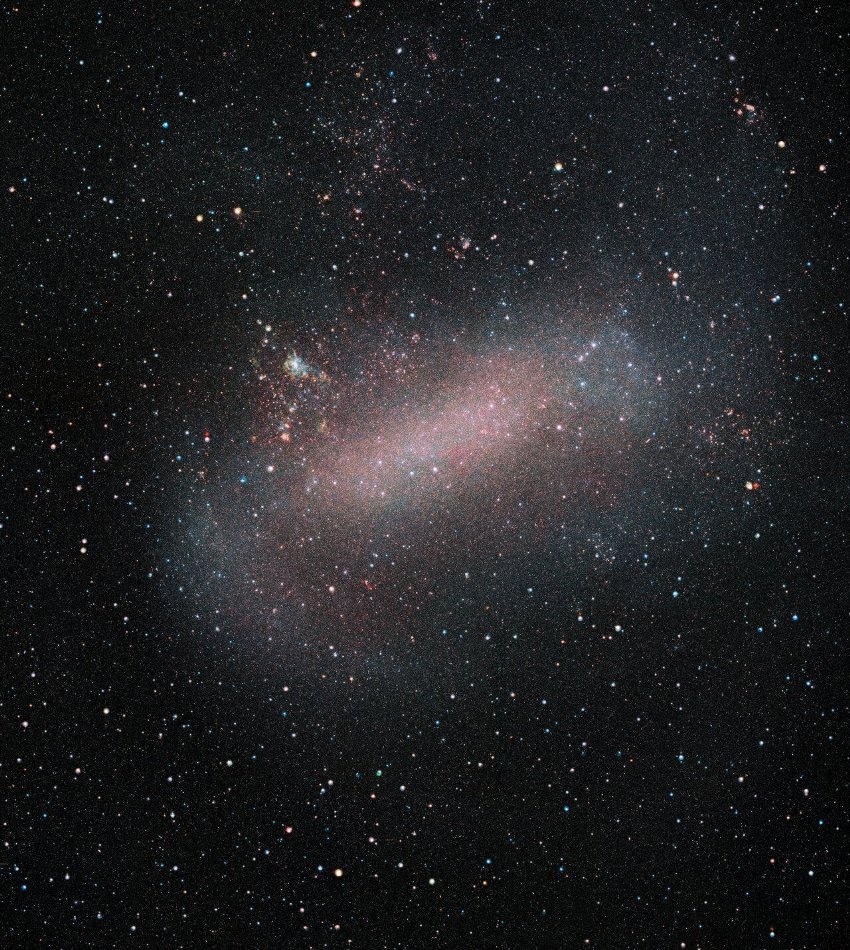Sep 17 2019
Located just 163,000 light-years from Earth, the Large Magellanic Cloud (LMC) is one of the closest galactic neighbors of Earth. The LMC and the Small Magellanic Cloud, its sibling, are among the dwarf satellite galaxies located nearest to the Milky Way.
 ESO’s VISTA telescope reveals a remarkable image of the Large Magellanic Cloud, one of our nearest galactic neighbors. VISTA has been surveying this galaxy and its sibling the Small Magellanic Cloud, as well as their surroundings, in unprecedented detail. This survey allows astronomers to observe a large number of stars, opening up new opportunities to study stellar evolution, galactic dynamics, and variable stars. (Image credit: ESO/VMC Survey)
ESO’s VISTA telescope reveals a remarkable image of the Large Magellanic Cloud, one of our nearest galactic neighbors. VISTA has been surveying this galaxy and its sibling the Small Magellanic Cloud, as well as their surroundings, in unprecedented detail. This survey allows astronomers to observe a large number of stars, opening up new opportunities to study stellar evolution, galactic dynamics, and variable stars. (Image credit: ESO/VMC Survey)
Moreover, the LMC is home to a number of stellar conglomerates and is a perfect testing ground for astronomers to explore the processes that lead to the formation of galaxies.
For the past ten years, these two galaxies were being observed by ESO’s VISTA telescope. The image presented in this study is the outcome of one of the several surveys performed by astronomers using this telescope.
The primary aim of the VISTA Magellanic Clouds (VMC) Survey is to outline the star formation history of the Large and Small Magellanic Clouds, and also their three-dimensional structures.
VISTA was key to obtaining this image since it observes the sky in near-infrared wavelengths of light. This enables it to view through clouds of dust that conceal parts of the galaxy. Although these clouds obstruct a huge portion of visible light, they are transparent at the longer wavelengths VISTA was developed to observe.
Consequently, several of the individual stars located at the center of the galaxy are clearly visible. Astronomers performed in-depth studies of nearly 10 million individual stars in the Large Magellanic Cloud and ascertained their ages with sophisticated stellar models. (Stellar models enable astronomers to estimate the life and death of stars, offering insights into characteristics such as their mass, ages, and temperature.) It was discovered that younger stars trace a number of spiral arms in this galaxy.
For thousands of years, people in the Southern Hemisphere have been fascinated by the Magellanic Clouds. However, these clouds were mostly not known to Europeans until the Age of Discovery. The name that is used at present is linked to the explorer Ferdinand Magellan, who started the first-ever circumnavigation of the Earth half a century ago.
The records brought back by the expedition to Europe unraveled several places and things to Europeans for the first time. The spirit of exploration and discovery is live at present in the study of astronomers around the world more than ever, such as the VMC Survey team whose observations resulting in the breathtaking image of the LMC.